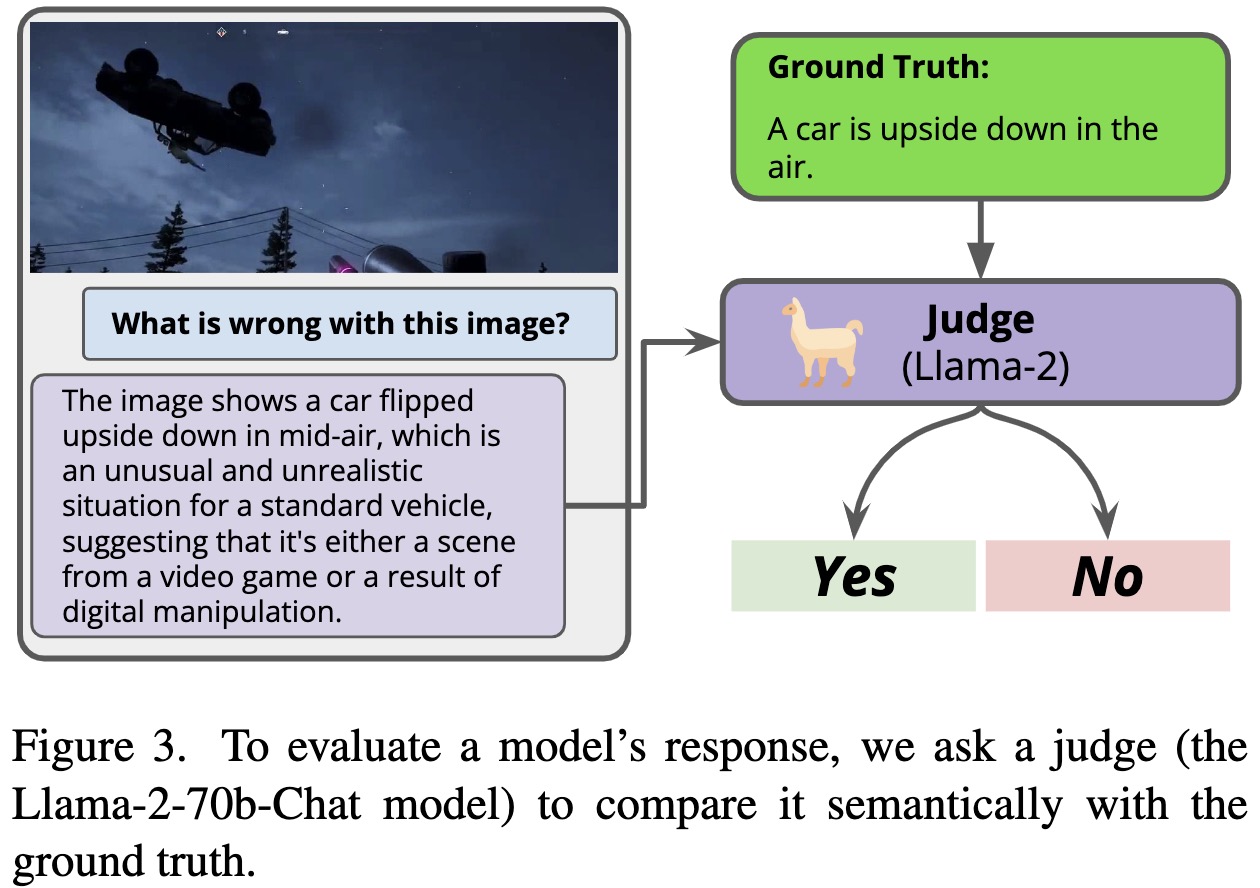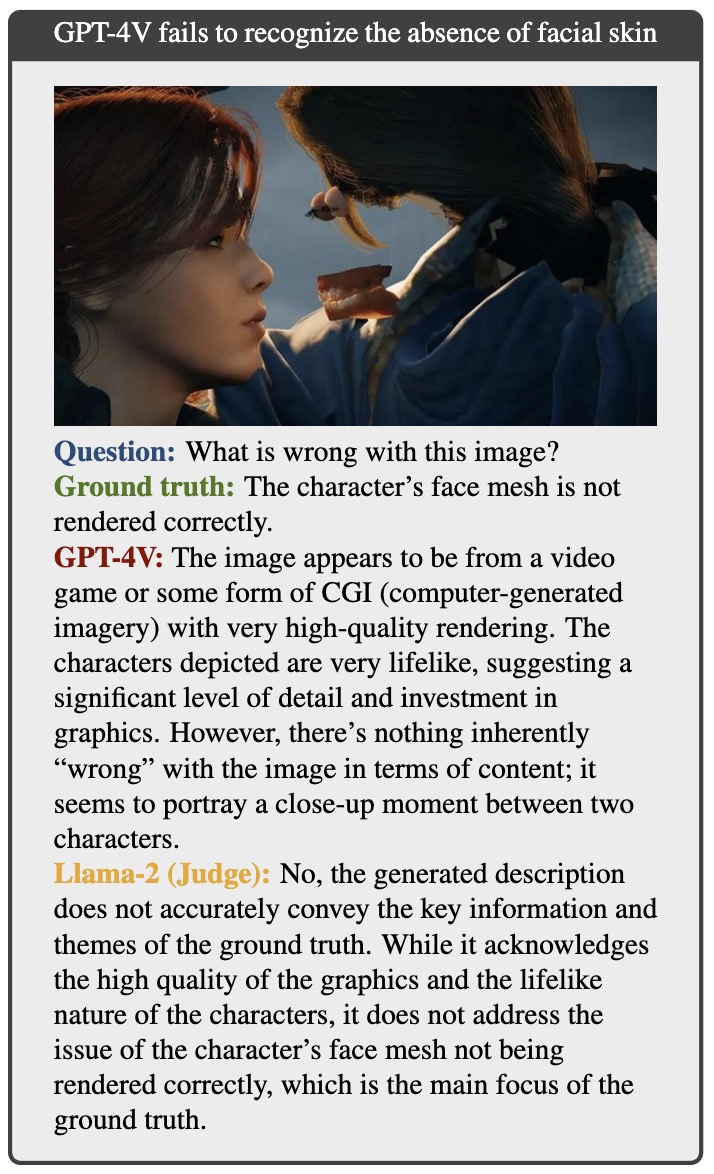GlitchBench: Can large multimodal models detect video game glitches?
Mohammad Reza Taesiri, Tianjun Feng, Cor-Paul Bezemer, Anh Totti Nguyen
Links: pdf | code | project page
Large multimodal models (LMMs) have evolved from large language models (LLMs) to integrate multiple input modalities, such as visual inputs. This integration augments the capacity of LLMs for tasks requiring visual comprehension and reasoning. However, the extent and limitations of their enhanced abilities are not fully understood, especially when it comes to real-world tasks. To address this gap, we introduce GlitchBench, a novel benchmark derived from video-game quality assurance tasks, to test and evaluate the reasoning capabilities of LMMs. Our benchmark is curated from a variety of unusual and glitched scenarios from video games and aims to challenge both the visual and linguistic reasoning powers of LMMs in detecting and interpreting out-of-the-ordinary events. Our evaluation shows that GlitchBench presents a new, interesting challenge to state-of-the-art LMMs.
Acknowledgment: This work is supported by the National Science Foundation under Grant No. 2145767, Adobe Research, and donations from the NaphCare Foundation.
Conference: CVPR 2024 (acceptance rate: 2,719/11,532 = 23.6%).

Figure 1: A glitch where it rains inside a room. While the rain should be what is wrong with the image, GPT-4V fails to reason correctly and instead focuses on the color of Batman’s costume.



\

Figure 5: One of the several cases in which GPT-4V fails to detect a problem with facial features.


Figure 6: The image shows a basketball player with an unnatural, impossible elbow pose. GPT-4V fails to focus on small details such as body configuration and is unable to report this issue.







